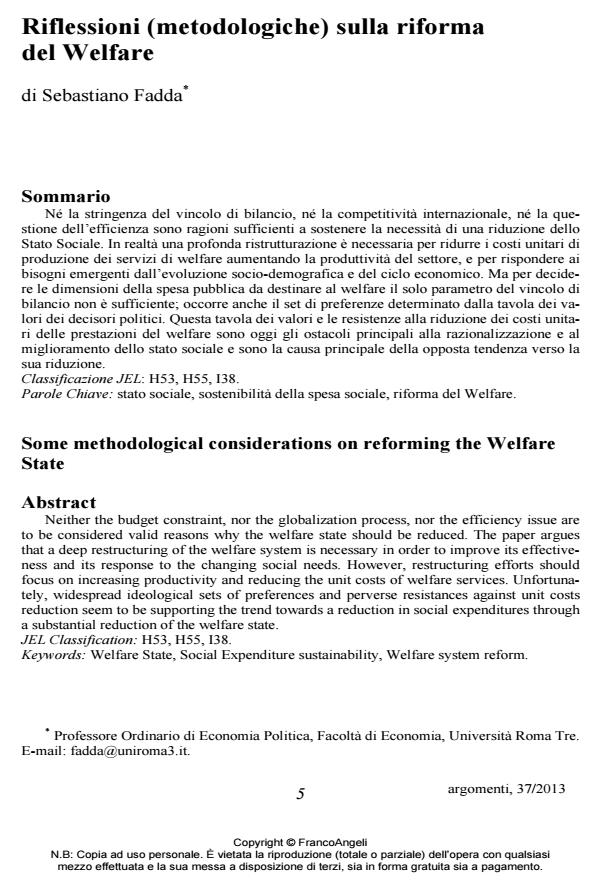Some methodological considerations on reforming the Welfare State
Journal title ARGOMENTI
Author/s Sebastiano Fadda
Publishing Year 2013 Issue 2013/37 Language Italian
Pages 16 P. 5-20 File size 636 KB
DOI 10.3280/ARG2013-037001
DOI is like a bar code for intellectual property: to have more infomation
click here
Below, you can see the article first page
If you want to buy this article in PDF format, you can do it, following the instructions to buy download credits

FrancoAngeli is member of Publishers International Linking Association, Inc (PILA), a not-for-profit association which run the CrossRef service enabling links to and from online scholarly content.
Neither the budget constraint, nor the globalization process, nor the efficiency issue are to be considered valid reasons why the welfare state should be reduced. The paper argues that a deep restructuring of the welfare system is necessary in order to improve its effectiveness and its response to the changing social needs. However, restructuring efforts should focus on increasing productivity and reducing the unit costs of welfare services. Unfortunately, widespread ideological sets of preferences and perverse resistances against unit costs reduction seem to be supporting the trend towards a reduction in social expenditures through a substantial reduction of the welfare state.
Keywords: Welfare State, Social Expenditure sustainability, Welfare system reform
Jel codes: H53, H55, I38
- Atkinson A. B. (2002). Social Indicators: the EU and social inclusion. Oxford University Press. DOI: 10.1093/0199253498.001.0001
- Caffè F. (1986). In difesa del Welfare State. Rosenberg & Sellier
- Jayadev A., Bowles S. (2006). Guard Labour. Journal of Development Economics, 79.
- Maddison A. (2003). The World Economy: Historical Statistics. OECD. Paris. DOI: 10.1787/9789264104143-en
- Sen A. (1976). Real National Income. Review of Economic Studies, 43.
Sebastiano Fadda, Riflessioni (metodologiche) sulla riforma del Welfare in "ARGOMENTI" 37/2013, pp 5-20, DOI: 10.3280/ARG2013-037001